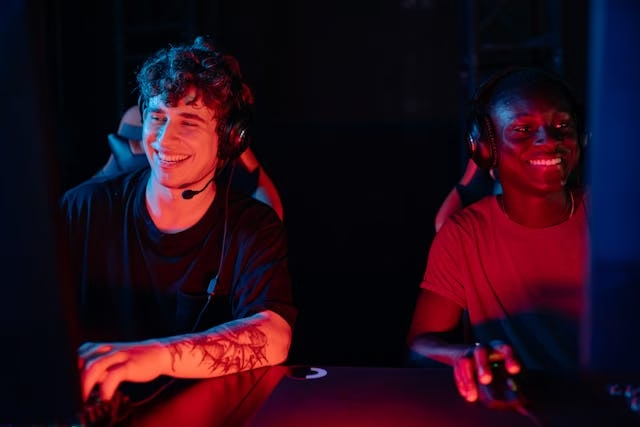A Majestic Return to Hyrule
When The Legend of Zelda: Breath of the Wild launched in 2017, it redefined what an open-world game could be, setting a benchmark for exploration, creativity, and environmental storytelling. Fast-forward to 2023, and Nintendo has delivered its long-awaited sequel: The Legend of Zelda: Tears of the Kingdom. Released exclusively for the Nintendo Switch, this follow-up had enormous shoes to fill. Remarkably, it not only lives up to its predecessor’s legacy but in many ways surpasses it, offering one of the most ambitious, imaginative, and rewarding console gaming experiences in years.
Gameplay: Innovation Meets Freedom
At the heart of Tears of the Kingdom is its commitment to player agency. While the base mechanics of climbing, gliding, and cooking return, the game introduces several new abilities that drastically alter how you interact with the world. Chief among these is the Ultrahand ability, which allows players to build contraptions, vehicles, and even weapons by fusing objects together. This system is as chaotic as it is brilliant, giving rise to endless creative solutions to puzzles and combat encounters.
The game also introduces a vertical dimension that radically changes exploration. With floating sky islands and subterranean depths beneath Hyrule, the world now spans multiple layers, each packed with secrets, dungeons, and challenges. These additions transform traversal into a constant thrill, with the skies and depths offering unique resources, dangers, and lore.
Story: A Darker Tale with Familiar Faces
While Breath of the Wild was often minimalist in its storytelling, Tears of the Kingdom offers a more structured and emotionally resonant narrative. After a cataclysmic event fractures Hyrule once again, Link and Zelda are separated, and Link must uncover the truth behind ancient legends and a reawakened evil. The plot is more cinematic and ambitious, with better-integrated cutscenes, deeper character development, and surprising twists. Longtime fans will appreciate the way this sequel draws upon the franchise’s broader mythology while carving a new path forward.
Visuals and Performance: Pushing the Switch to Its Limits
Graphically, Tears of the Kingdom doesn’t stray far from the visual style of its predecessor. The cel-shaded art direction still looks gorgeous, with soft lighting, expressive character models, and breathtaking environmental design. However, it’s the sheer scale and complexity of the world—especially with the multi-layered map—that’s most impressive. The game runs at a steady 30 FPS in most scenarios, a technical achievement considering the hardware limitations of the Switch and the ambitious systems at play.
There are occasional performance dips during large-scale battles or intricate constructions, but these are rare and do little to detract from the overall experience. Nintendo’s optimization work here is nothing short of masterful.
Sound and Music: Atmosphere and Emotion
The audio design is as subtle and powerful as ever. Ambient sounds—rustling leaves, distant thunder, birdsong—help ground players in the world. The soundtrack mixes minimalist piano themes with sweeping orchestral pieces during pivotal moments. New compositions for the underground areas and sky islands add a sense of mystery and grandeur. Voice acting, while still limited to key scenes, is delivered with sincerity and fits the game’s tone perfectly.
Exploration and Side Content: An Endless Playground
Hyrule in Tears of the Kingdom feels more alive than ever. Shrines return, offering smart puzzles and combat trials. Side quests are more involved, often revealing character backstories or leading to meaningful rewards. The addition of Zonai technology encourages players to tinker endlessly, whether it’s building a flying machine to skip a dungeon or crafting a self-driving cart to traverse long distances.
The Depths—dark, corrupted areas below the surface—introduce a new kind of challenge, where visibility is limited, and danger is constant. Meanwhile, sky islands provide bite-sized puzzles and valuable resources. Together, these vertical layers multiply the sense of discovery, giving players reasons to revisit familiar locations from new perspectives.
Combat and Customization: Depth and Creativity
Combat remains familiar but gains new depth with the Fuse ability. By combining weapons with virtually any object, players can create absurd but effective tools—think spears made from pitchforks or exploding arrows fused with monster parts. Weapon durability still plays a role, but the ability to constantly craft and adapt reduces frustration and increases strategic options.
Armor sets offer bonuses and can be upgraded, and the game encourages experimentation. From stealth builds to tanky heavy hitters, there’s a satisfying range of playstyles to explore.
Final Verdict: A Masterpiece Reforged
The Legend of Zelda: Tears of the Kingdom is a triumph of game design and creativity. It takes the foundations of a beloved masterpiece and elevates them with bold new ideas, rich storytelling, and nearly limitless freedom. It challenges players to think differently, rewards experimentation, and crafts a world that feels truly alive.
For Nintendo Switch owners, this is more than just a must-play—it’s a generation-defining experience. Whether you’re constructing flying battle platforms or simply gliding through a sunrise over Hyrule, Tears of the Kingdom continually inspires wonder.
Rating: 10/10 – A breathtaking sequel that redefines what’s possible in open-world gaming.
Would you like a version of this review formatted for a blog or online store?

